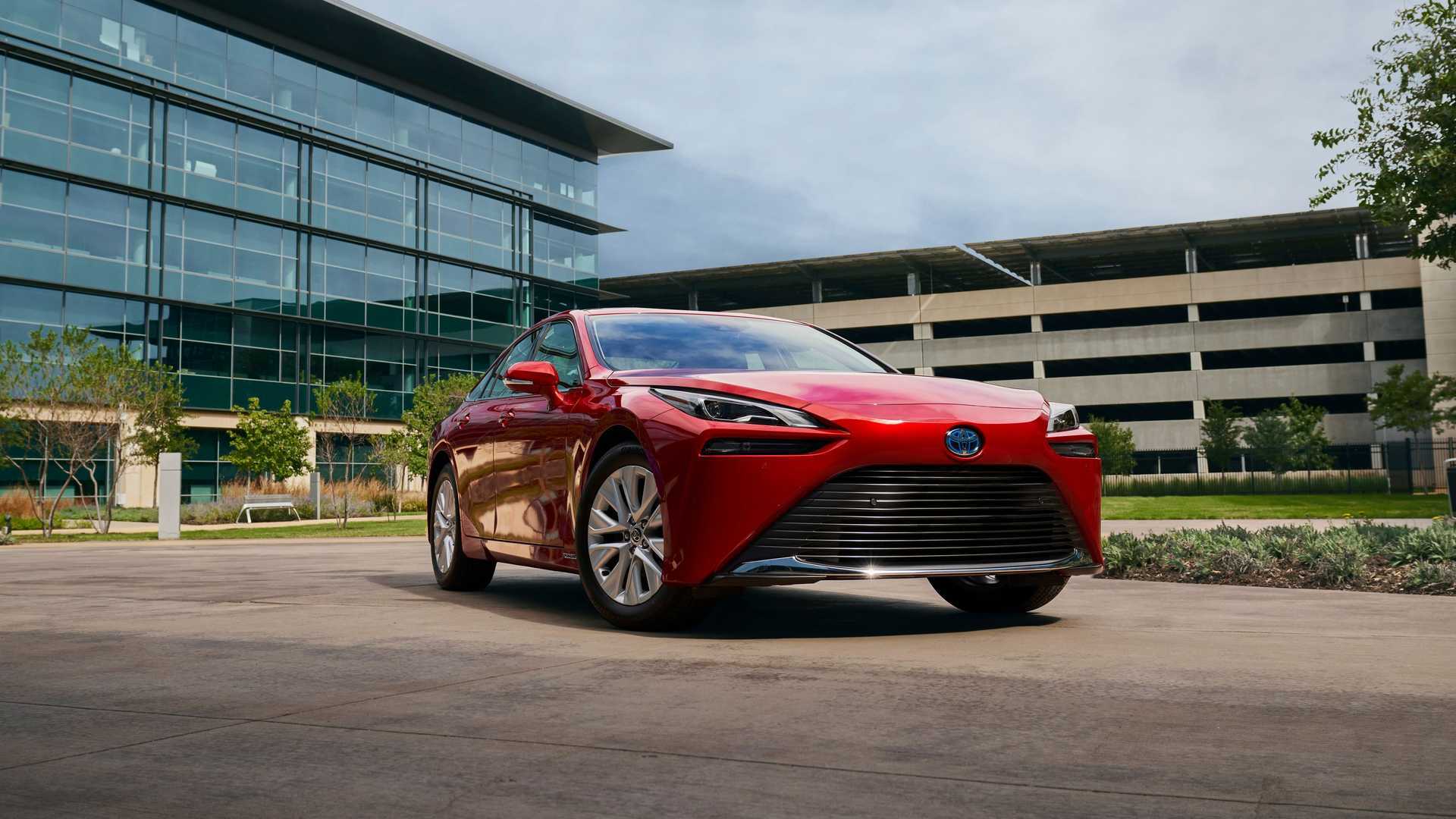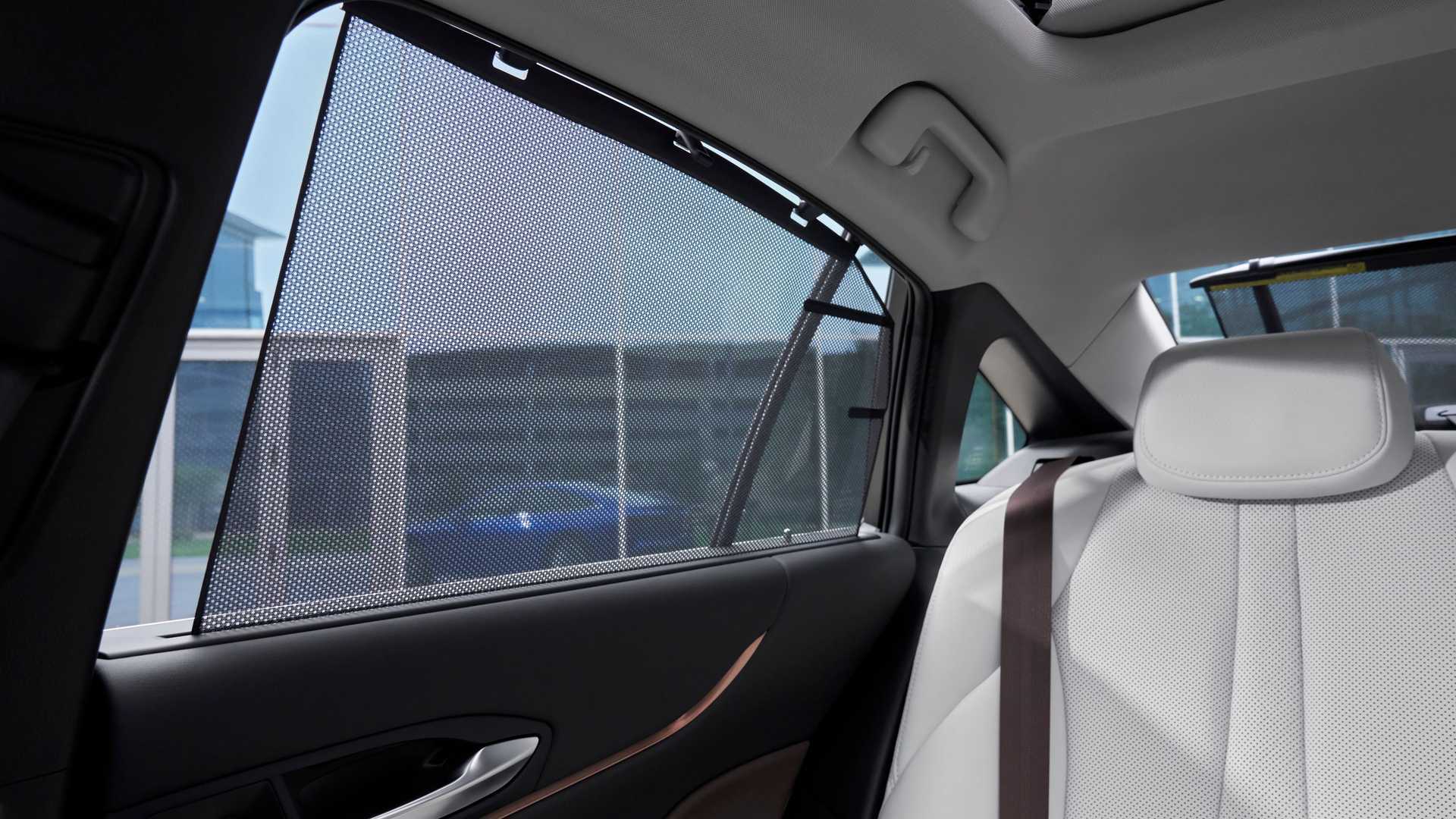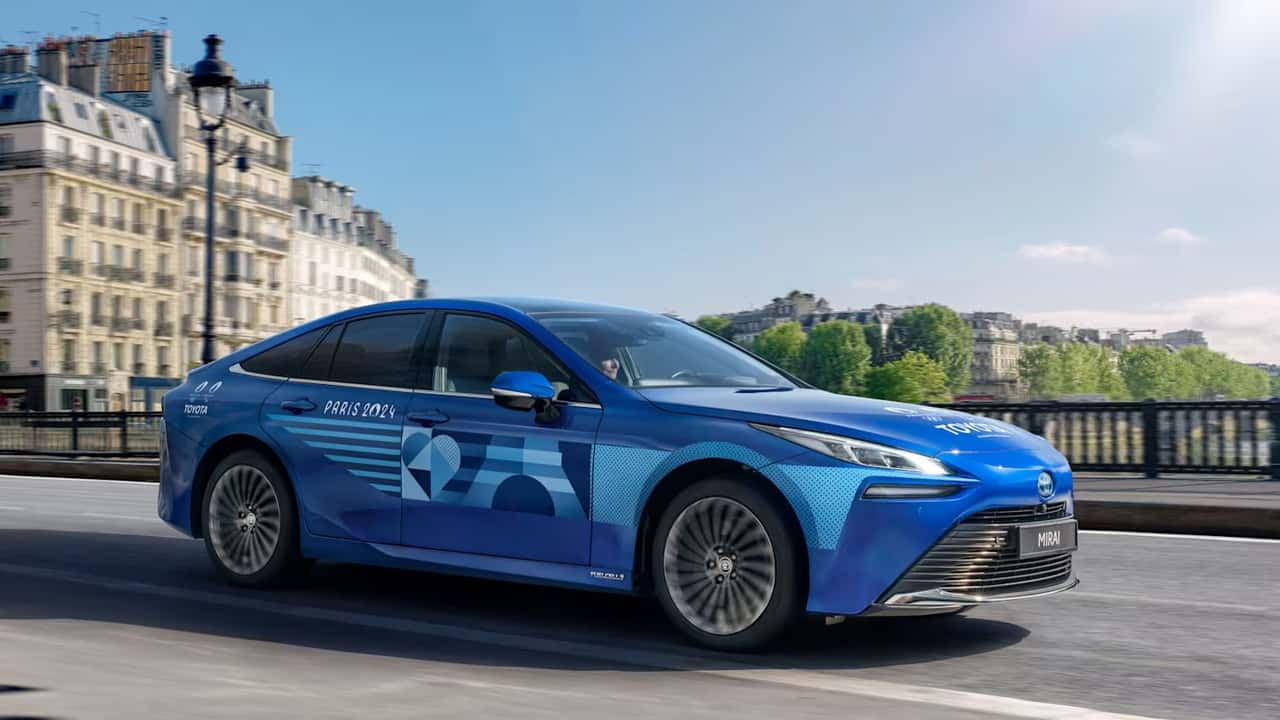The Paris 2024 Summer Olympics are less than two weeks away from their July 26 kickoff. The organizers are touting the event as the “greenest-ever,” with half the carbon footprint compared to previous Games. But a group of scientists, engineers and academics are upset about the official car chosen for this event.
Toyota has been a major sponsor of the Olympics for years, and in Paris, it is using a fleet of 500 hydrogen fuel-cell-powered Toyota Mirai sedans to shuttle athletes around. But while those cars do have zero tailpipe emissions, a coalition of 120 scientists from the United Kingdom and the United States have written a letter objecting to their use.
Get Fully Charged
The Mirai mirage
The Toyota Mirai was supposed to be the future of transportation. With zero tailpipe emissions and the prospect of hydrogen fueling stations spanning at least as far as traditional gas stations, it was the perfect solution. But the revolution never came. With the vast majority of commercial hydrogen still coming from fossil fuels, a crumbling infrastructure and plummeting resale values, the Mirai became an undesirable car that owners are struggling to get rid of. And now, scientists want it removed from the Paris 2024 Olympics list of official vehicles.
“We are writing to express our concern that Toyota’s promotion of a hydrogen car is scientifically misaligned with net-zero and will damage the reputation of the 2024 Games,” the letter said, as published by Hydrogen Insight and CNN. “Opportunity remains to reroute, and we urge that you require Toyota to replace the Mirai with a Battery Electric Vehicle as the official Games vehicle.”
The group, which includes scientists and engineers from the University of Cambridge, Oxford University and the University of Colorado, said that 96% of the world’s hydrogen is still derived from fossil fuels like methane gas, making most hydrogen-fueled vehicles like the Mirai much more polluting than pure EVs and only marginally cleaner than traditional combustion vehicles.

Toyota Mirai at Hydrogen Pump
Achieving the 2024 Olympics’ ambitious green-energy goal will involve using vast photovoltaic arrays, structures that can be used after the games are over, and yes, use of the Mirai sedan. But even fueling hydrogen cars is as much a challenge there as it is anywhere.
To put things into perspective, there are fewer than 10 hydrogen fueling stations in the whole of Paris–the city that hosts this year’s Olympics. According to the European Hydrogen Refuelling Stations Availability System, a public-private partnership supporting research and innovation activities in hydrogen technologies in Europe, there are eight hydrogen stations in Paris, but three are unavailable at the time of writing this article. According to the European Hydrogen Observatory, that number goes down to just three.
So how does Toyota plan on fueling the 500 Mirai FCEVs that will ferry athletes and officials through France’s capital? With hydrogen derived from water and organic matter generated with renewable sources, the company said, according to CNN.
Presumably that involves some portable hydrogen stations that will disappear once the Olympics are over, leaving the taxi drivers who will get the keys to the Mirais after the event stuck with cars that are a logistical nightmare to refuel.
Gallery: 2021 Toyota Mirai (US-spec)







To their credit, Toyota and the Paris 2024 Olympic Games organizers will deploy a fleet of over 2,650 electrified vehicles, including 1,150 battery-powered EVs, 500 Mirai FCEVs, 10 hydrogen buses and around 250 battery-powered Accesibile People Movers (APMs.)
Still, the Mirai has been a consistent source of controversy in recent years, particularly in the U.S. While Toyota continues to invest heavily in the fuel-cell technology it pioneered, owners of the Mirai have filed lawsuits and demanded buybacks over the lack of fueling stations, the extremely high price of hydrogen and a general sense of being deceived by the manufacturer.
In the U.S., Mirai owners were left scratching their heads after multiple hydrogen stations were shut down, forcing them to drive dozens of miles to refuel, only to discover that there’s a long queue or that the station is unavailable, as InsideEVs discovered after talking to several owners of Toyota’s flagship hydrogen sedan. “The entire H2 vehicle experience is an experiment that is failing,” one Mirai owner told InsideEVs earlier this year. “I didn’t expect to buy a vehicle from Toyota and feel duped, cheated, and misled.”
The Toyota Mirai’s Olympic Backlash: ‘Scientifically Misaligned’
In recent months, the Toyota Mirai, a hydrogen fuel cell vehicle, has faced a backlash from critics who argue that its sponsorship of the Tokyo Olympics is scientifically misaligned with the goals of the event. The decision to showcase the Mirai as a sustainable and environmentally friendly transportation option during the Olympics has sparked a heated debate about the true environmental impact of hydrogen fuel cell technology.
At the heart of the controversy is the debate over the efficiency and sustainability of hydrogen fuel cells compared to other alternative energy sources such as electric vehicles. Critics argue that hydrogen fuel cells are less efficient and more environmentally damaging than battery-powered electric vehicles, which have become increasingly popular in recent years. They point to the fact that producing hydrogen often involves using fossil fuels, which negates any potential environmental benefits of using a hydrogen fuel cell vehicle.
Moreover, critics argue that the infrastructure required to produce, store, and transport hydrogen is currently lacking, making it a less viable option for widespread adoption compared to electric vehicles, which can be charged using existing electrical grids. The high cost of producing and storing hydrogen further adds to the skepticism surrounding the use of this technology as a sustainable alternative to traditional gasoline-powered vehicles.
Proponents of hydrogen fuel cell technology, however, argue that the Toyota Mirai represents a step towards a cleaner and more sustainable future for transportation. They point to the fact that hydrogen fuel cells emit only water vapor as a byproduct, making them a truly zero-emission option when compared to gasoline-powered vehicles. They also argue that advancements in hydrogen production, storage, and distribution technology will make it a more viable option in the future.
Despite these arguments, the controversy surrounding the Toyota Mirai’s sponsorship of the Tokyo Olympics highlights the need for a careful and thorough evaluation of the environmental impact of different alternative energy sources. As the world seeks to transition towards a more sustainable future, it is essential that policymakers, industry leaders, and consumers consider all the available options and choose the most efficient and environmentally friendly solutions.
In conclusion, the debate over the Toyota Mirai’s Olympic sponsorship underscores the importance of critically examining the environmental impact of hydrogen fuel cell technology. While some argue that hydrogen fuel cells represent a cleaner alternative to traditional gasoline-powered vehicles, others remain skeptical of its efficiency and sustainability. As the world grapples with the urgent need to reduce carbon emissions and combat climate change, it is crucial that we carefully consider the true environmental impact of all alternative energy sources before promoting them as sustainable solutions.

